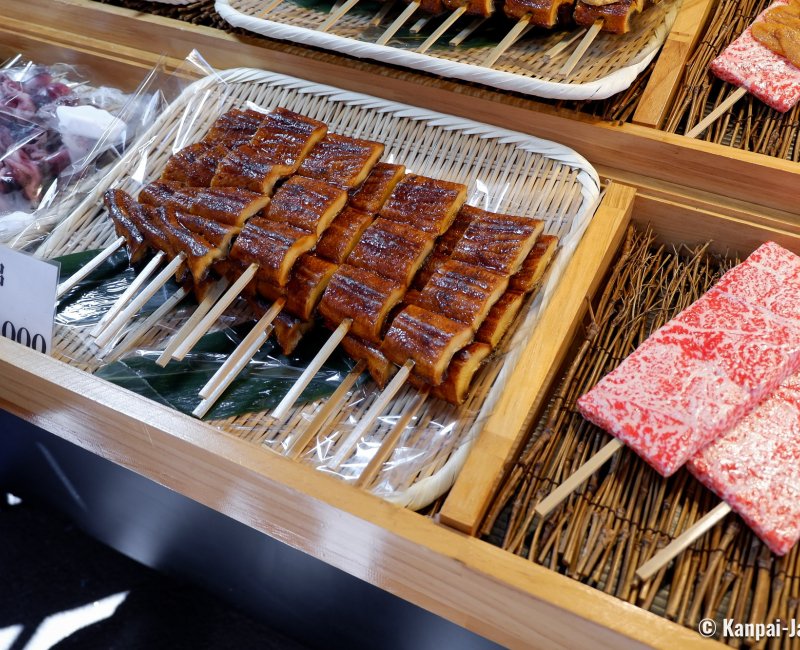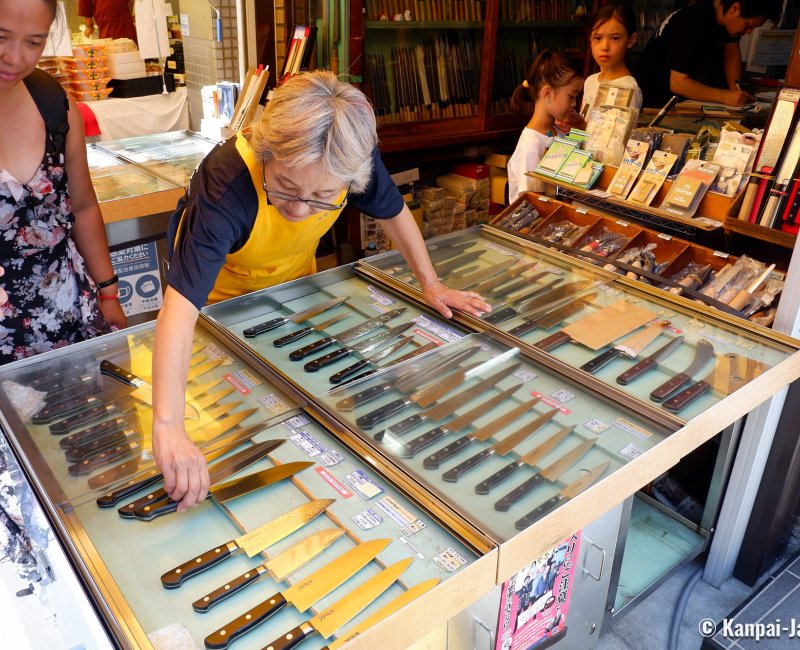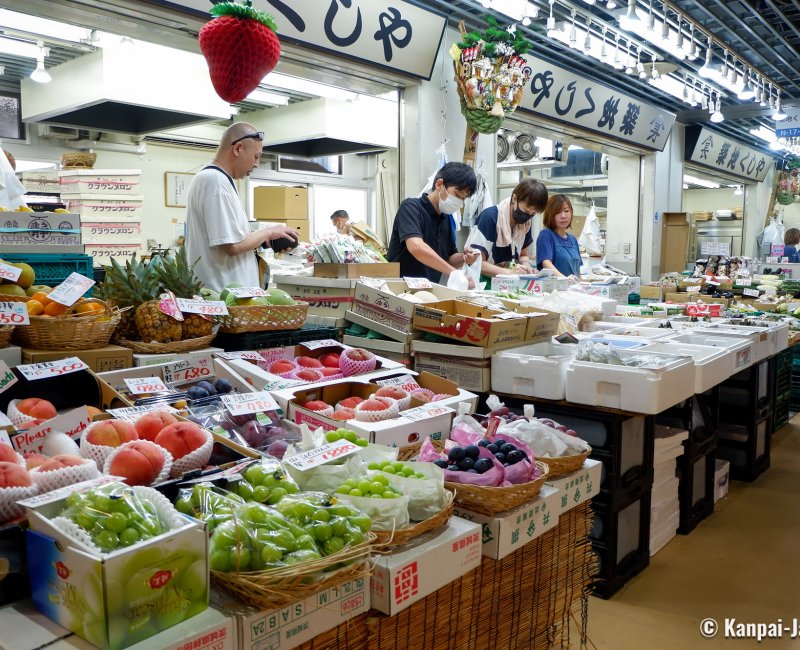Tsukiji Outer Market
Tokyo’s Food Town
Tsukiji Outer Market is a cluster of streets lined with small food shops selling fresh ingredients to professional and individual customers. It is located next to the Fish Market’s former site that was moved to Toyosu in 2018. Tsukiji offers various typical Japanese dishes such as raw fish, seafood, seaweed, sweet omelets and seasonal fruits and vegetables.
At the end of 2018, Tsukiji Fish Market was moved to Toyosu, an artificial island located a little bit further east on Tokyo Bay. The main covered building was dismantled but the surrounding streets, that were home to many delicatessen shops and sushi 🍣 restaurants, mainly catering the market’s workers, remained in operation.
Called "Tsukiji Outer Market," this group of fresh products merchants is still attracting regular customers as well as international tourists, especially since the post-Covid 🦠 borders’ reopening. Most of them are resellers who buy their supply in Toyosu and resell to Tokyo’s restaurants and individual customers. You’ll find fish and seafood of course, but also vegetables, fruits, dried food and red meat.
Therefore, the gourmets or those who want to explore Tokyo’s food diversity will find Tsukiji Outer Market very enjoyable and an excellent and popular place. Depending on the time of the year and the hour, one can nonetheless expect a tourist influx and long waiting lines can sometimes form at food stalls. Note that the market has its own tourism information center called Plat Tsukiji, where you can get a paper maps in English very convenient to roam the various shops and specialty restaurants.

Lively and touristic shopping streets
Tsukiji Outer Market’s central square is at a short distance from the subway 🚇 exit, and is spreading between the Namiyoke-dori and Harumi-dori avenues. These shopping streets are filled with small stalls selling delicatessen dishes and bites of the day. Dish size is for 1 person and allows to try food at several places. There is a wide array of ready to eat, fresh and cooked food, such as:
- Sushis;
- Small kaisendon donburi bowls garnished with sashimis;
- Grilled unagi eels skewers;
- Oysters;
- Wagyu beef skewers;
- Tamagoyaki sweet omelet sticks, a staple food in Tsukiji;
- Takoyaki octopus balls;
- Various fried or breaded croquettes;
- Senbei crackers, filled with dried ingredients;
- Ice cream (soft serve);
- Japanese confectioneries like mochi or daifuku; or,
- Seasonal fruits served on skewers.

Restaurants have seating and offer full courses with drinks. Before or after lunch, you can also do a bit of gastronomic shopping, thanks to:
- Spices shops, selling with dried seaweeds, katsuobushi bonito, fermented condiments such as tsukudani, furikake as well as all vegetables and fishes that can be consumed dried;
- Cooking utensils shops, especially Japanese knives shops.
Sstreets are very lively during the shops’ opening hours, however, the shops may close earlier if they are sold out for the day. A lot of tourists still chose Tsukiji over Toyosu as the later is not so convenient to access and further from the center of the capital, in addition to its less popular and too clean aspects.

Tsukiji Uogashi: the new facility in Tsukiji
On the side of the streets maze, visitors can discover a new covered market named Tsukiji Uogashi. It is made of 2 modern establishments ("Odawara-bashi" and "Kaiko-bashi") topped by an open-air terrace with a barbecue area and a view on the former location of the market.
Professionals gather here very early in the morning (as soon as 6 a.m.) to negotiate the fresh products that will be prepared and served on the same day in Tokyo’s restaurants. In addition to the fish market, Tsukiji Uogashi is also home to a fruits and vegetables market. There, you can buy wasabi for example, and discover the true taste of the green paste when it is freshly grated from the root.
At the upper floor, a food court is available for eating under the protection of a roof the dishes just bought at the stores. Sometimes less crowded than the surrounding streets, Tsukiji Uogashi is worth a stop for a snack in a quieter place; lavatories are also available.

Market open in the morning and on weekdays
Tsukiji Outer Market is closed in the afternoon: its opening hours are indeed mostly suited to the intermediaries who work here and to the restaurants that buy their supply here. Shop keepers open their stall as soon as 5 or 6 a.m. and this time of the day is restricted to business between professionals.
Individual customers, be they domestic or international visitors, are welcome to arrive from 9 a.m., either for eating or strolling among the stalls. The attendance peak at the food stalls is usually between 10:30 a.m. and noon. The market then closes in the early afternoon, around 2 p.m. There is nothing to do or see in the afternoon.
As for closing days, even if each shop is independent and makes its own hour, there are general rules:
- The market is closed on Sundays, bank holidays, and during the New Year Holidays;
- Wednesday is also a frequent closing day for the market.
We therefore recommend visiting a morning on a weekday, except on a Wednesday and avoiding the national holiday periods to enjoy the largest number of small shops.
Most of merchants handle cash or Suica (or other IC card) as means of payment, but not credit or bank cards 💳. Moreover, there are a few things to know about manners at the market:
- Do not bargain the prices;
- Eat as soon as you are served, in the dedicated place, usually standing in or in front of the shop, as eating while walking is forbidden;
- Put away trashes in the designated bins.

Lastly, there are several shrines and temples near the market. We recommend Tsukiji Hongan-ji temple and its unusual modern architecture, as well as Namiyoke Inari-jinja shrine and its 2 mikoshi portable floats shaped in lion’s heads that parade in Tsukiji’s streets for the yearly Lion Dance Festival (Tsukiji Shishi Matsuri) in June.

